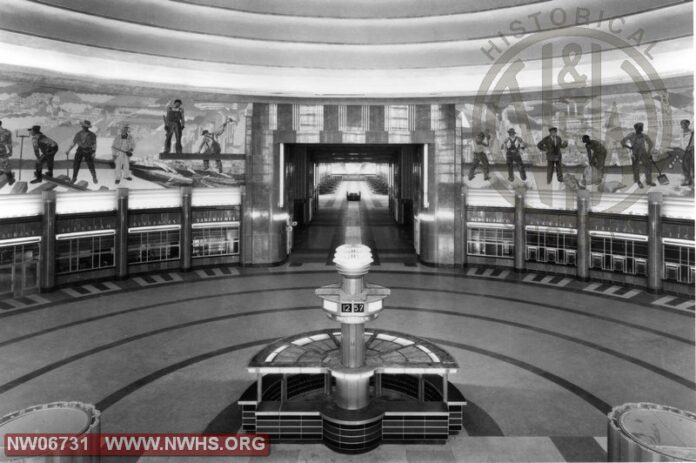The all-volunteer historical group cataloged its 100,000 entry into its archives

On Saturday, September 13, in a non-descript building on the western edge of Roanoke, the Norfolk & Western Historical Society, an all-volunteer group of rail enthusiasts and historians, cataloged the 100,000th entry into its archival collection.
“Twenty years ago, we couldn’t imagine that a group of historians and rail fans could accomplish so much,” said Ron Davis, president of the Norfolk & Western Historical Society.
To celebrate, the Society will hold an Open House at their archives on Thursday, November 6 from 2 pm to 6 pm. The Society is located at 2101 Salem Avenue SW, Roanoke, VA 24016.
The Society was founded in 1984 with a photocopied newsletter mailed to fans of the Norfolk & Western Railway, sharing stories and information about the Norfolk & Western Railway and the Virginian Railway. The Society’s archives was started in 1995 when the Society received a sizable number of mechanical drawings and related files from the railway’s car shops in Roanoke.
Today, the Norfolk & Western Historical Society is the sole keeper of the history of the Norfolk & Western Railway and the Virginian Railway – from drawings of every locomotive and passenger car designed and built by Norfolk & Western, to photographs, to company publications, correspondence, civil engineering surveys and more.
“The Arrow,” the Society’s quarterly magazine, is mailed to its 1,300 members worldwide, as well as over 80 libraries and museums. The Society also publishes books on the history of the two railroads and the development of the Central Appalachian coal region.
“The railroads brought industry and commerce to Virginia’s and West Virginia’s Appalachian Mountain regions, while transporting the states’ mineral wealth, east and west to fuel the country’s steel furnaces, build the Panama Canal and heat the nation,” said Alex Schust, chairman of the Society. “By preserving, archiving and sharing the history of these two railroads, we’re helping the public understand the impact of these railroads on the development of the Central Appalachian region and the nation.”
The society’s ongoing challenge is finding and collecting important documents. According to Ron, the task isn’t so much sorting, cleaning, archiving and cataloging the documents and photographs; it’s finding them in the first place. Consolidation and mergers in the railroad industry meant that many of the documents went lost.
“Changes in the rail industry meant that important documents weren’t needed anymore,” Ron said. “So, in many cases, those documents were either thrown out or an employee brought them home as keepsakes. Important, historical, irreplaceable items could be sitting in a retiree’s basement or in a box in someone’s office.”
Some of those items are proving to be priceless. A case in point is the restoration of the Class J 611 Steam Passenger Locomotive currently underway. The Society is providing mechanical drawings to the restoration team so that they can check, restore and rebuild essential parts that need replacing.
“The drawings are helping the restoration team keep true to Norfolk & Western’s original design and engineering,” Ron said. “Norfolk & Western locomotives were the pinnacles of steam locomotive technology. Unlike many other railroads, N&W designed, built and maintained its own steam locomotives at its shops in Roanoke. These locomotives were powerful enough to move coal trains over the mountains, move passenger trains over 100 miles per hour, yet they were efficient to operate and maintain. This permitted N&W to continue to build and operate their fleet of modern precision steam locomotives long after most railroads had retired theirs.”
Society volunteers meet for four days each month to collect, preserve, sort and catalog items into its archives.
The society also seeks to provide important resources to historians worldwide. “We feel that we’re a leader in sharing and making our archives accessible to our members and the public,” Ron said. Over a quarter of the cataloged collection has been digitized and can be viewed by the general public on the Society’s web site (www.nwhs.org ). Copies of many of the items listed can also be ordered through the web site.
The Society’s archives provide first-hand information for researchers developing exhibits and displays for museums and other venues, historians writing books, and rail heritage partners wanting to learn from detailed mechanical drawings.
“Today, our database is 100,000 strong, and we have at least 200,000 documents to go before the entire collection of these two historic railroads is available to the public at large,” Alex said.
– Peg McGuire


